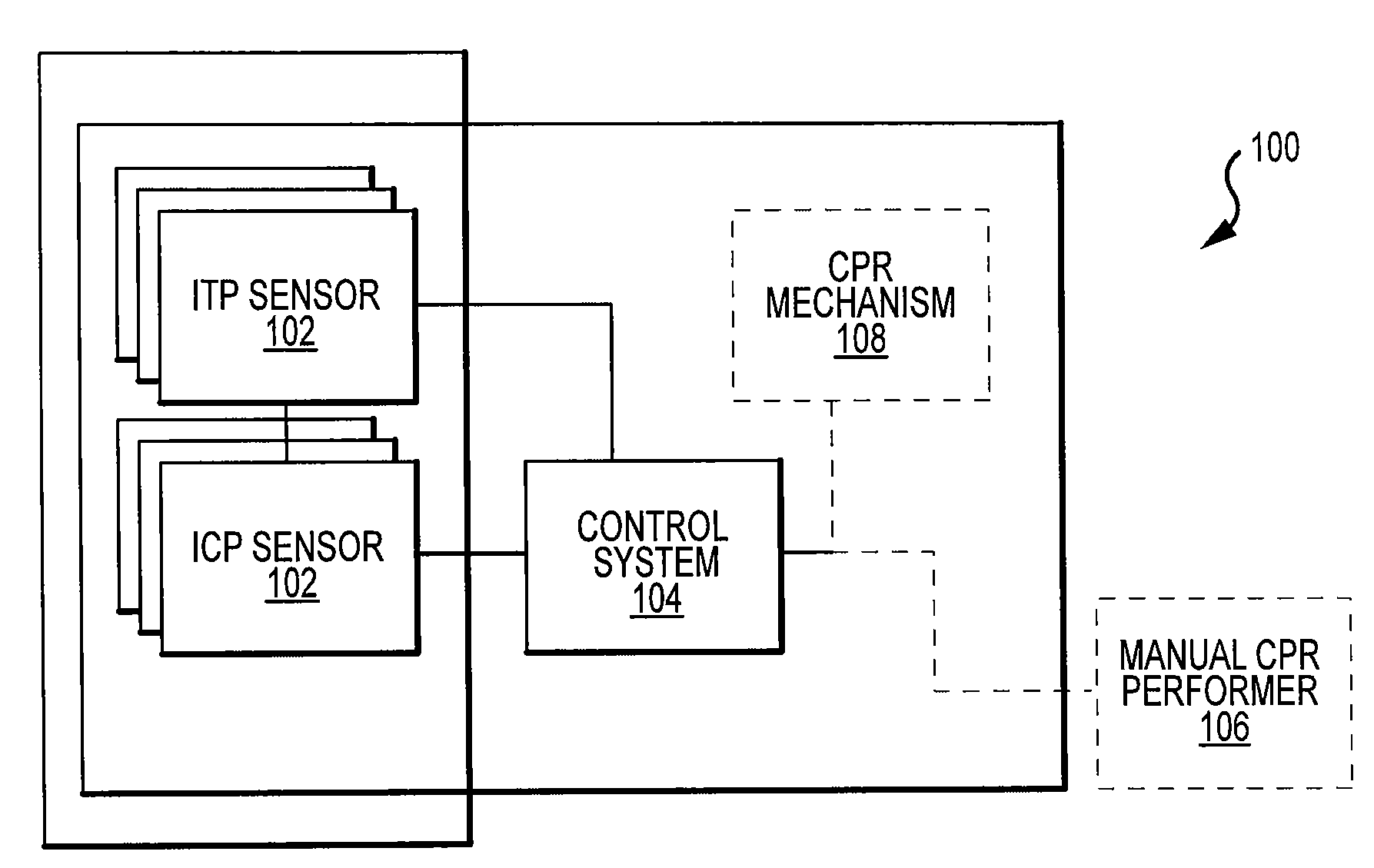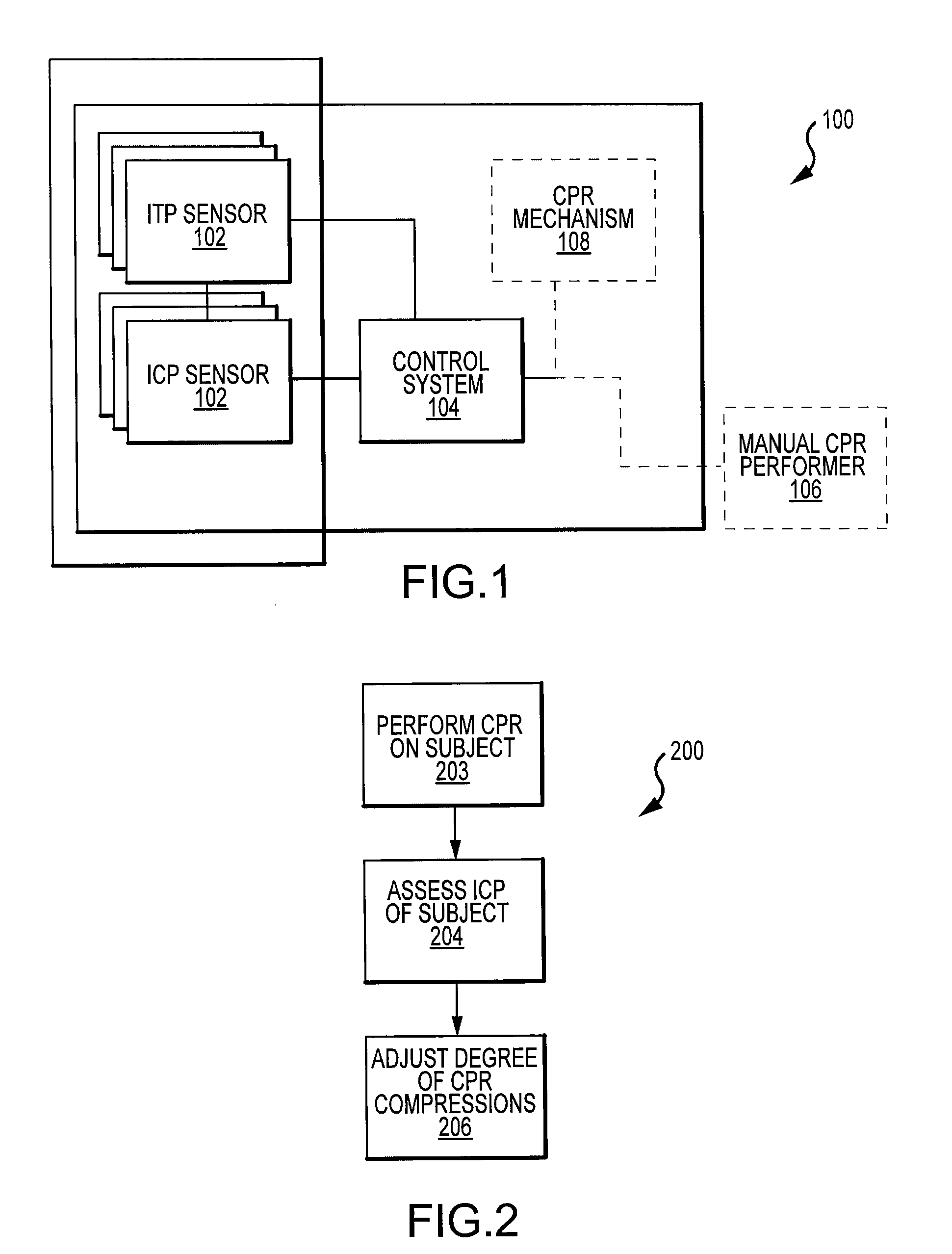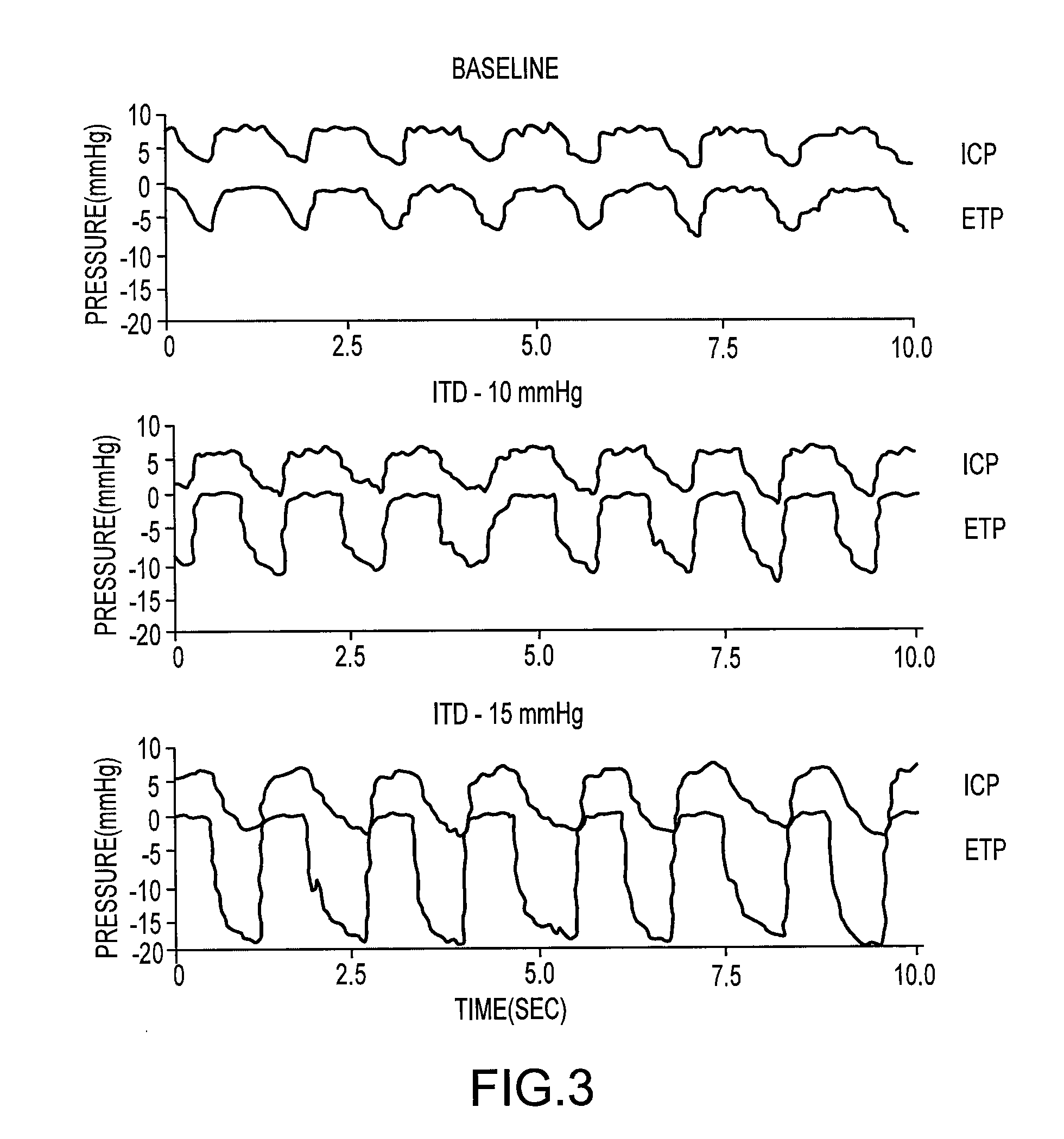Intrathoracic pressure limiter and cpr device for reducing intracranial pressure and methods of use
a technology of intracranial pressure and limiter, which is applied in the field of intracranial pressure limiter and cpr device for reducing intracranial pressure and methods of use, can solve the problems of sudden cardiac arrest, cardiac arrest, and passing ou
- Summary
- Abstract
- Description
- Claims
- Application Information
AI Technical Summary
Benefits of technology
Problems solved by technology
Method used
Image
Examples
example 1
[0046]Both ITP and ICP can increase to a level that is dangerous during CPR when the chest is compressed but also not allow to expand laterally. The following experiment demonstrates a new observation related to the relationship between increases in ITP and the resultant increase in ICP. It further demonstrates the need for controlling and monitoring the force of compression applied during CPR so that cerebral perfusion pressures (calculated as the difference between the arterial pressure in the brain and the intracranial pressure) are maximized. These new concepts are shown by banding the chest with a circumference band. Banding the thorax increases intracranial pressure and central venous pressure leading to lower cerebral perfusion pressure and carotid flow independently from compression depth. This was demonstrated in 7 pigs in untreated ventricular fibrillation (VF) for 6 minutes followed by treatment with an automated compression device with a compression rate of 100 / min, a de...
example 2
[0047]A more detailed description of Example 2 may be found in: Critical Care Medicine. 34(12) Suppl:S495-S500, December 2006. Yannopoulos, Demetris M D; McKnite, Scott H. B S; Metzger, Anja PhD; Lurie, Keith G. M D, incorporated herein by this reference. This example shows the newly discovered relationship between intracranial pressure and intrathoracic pressure. In this example, the pigs are not in cardiac arrest, as they were in Example 1.
[0048]Four different protocols were used to test the hypothesis that the two different methods (namely the inspiratory impedance threshold device or ITD and the intrathoracic pressure regulator or ITPR) to lower intrathoracic pressure would result in a decrease in intracranial pressure.
[0049]Protocol I: Spontaneously breathing sedated pigs with normal physiology were used to evaluate the effects of different negative intrathoracic pressures on intracranial pressures and cerebral perfusion pressure. For this protocol two difference inspiratory im...
PUM
 Login to View More
Login to View More Abstract
Description
Claims
Application Information
 Login to View More
Login to View More - R&D
- Intellectual Property
- Life Sciences
- Materials
- Tech Scout
- Unparalleled Data Quality
- Higher Quality Content
- 60% Fewer Hallucinations
Browse by: Latest US Patents, China's latest patents, Technical Efficacy Thesaurus, Application Domain, Technology Topic, Popular Technical Reports.
© 2025 PatSnap. All rights reserved.Legal|Privacy policy|Modern Slavery Act Transparency Statement|Sitemap|About US| Contact US: help@patsnap.com



